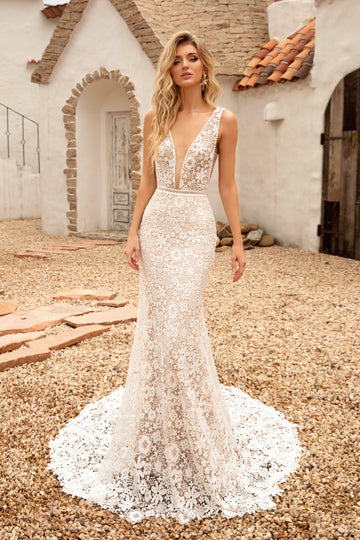Cultural Significance of Wedding Attire: A Global Perspective
Cultural Significance of Wedding Attire: A Global Perspective
In many cultures around the world, wedding attire holds a deep and symbolic meaning. It reflects not just personal taste, but also social status, cultural heritage, and values. From vibrant saris in India to sleek tuxedos in the West, each outfit tells a story. In this article, we will explore the cultural significance of wedding attire across different nations, how traditions shape the choice of garments, and the intricate details involved in these important ceremonies.
The Role of Wedding Attire in Various Cultures
Wedding attire varies significantly around the globe, with each culture putting a unique spin on what the bride and groom should wear. Understanding these differences can enrich our understanding of weddings themselves. Below, we explore some notable examples.
| Region | Attire | Significance |
| India | Sari for brides, Sherwani for grooms | Symbolizes tradition, family values, and cultural heritage |
| China | Qipao or Cheongsam | Represents luck, prosperity, and happiness |
| Japan | Kimono | A reflection of elegance, respect, and harmony |
| Western Countries | White wedding gown, tuxedo | The symbolism of purity and commitment |
| Middle East | Elaborate gowns with gold embroidery | Denotes wealth, generosity, and social status |
India: A Collision of Traditions
In India, wedding attire is deeply intertwined with the region's rich history and multiple cultures. Brides often wear a sari, which is a long piece of cloth that can be draped in various styles. The choice of color, embroidery, and fabric carries significant meaning, often influenced by the region of the bride's family. For instance, red signifies prosperity and fertility, making it a popular choice in many parts of India.
On the other hand, grooms typically wear a Sherwani, a long coat-like garment that embodies elegance and formality. The materials used—often silk or brocade—along with intricate embroidery, reveal a family's social standing. In many Indian weddings, the attire is a marker of both cultural heritage and personal pride, often passed down through generations.

China: Colors of Happiness and Prosperity
In Chinese weddings, the color red dominates, symbolizing joy, good fortune, and celebration. Brides commonly wear a traditional garment known as Qipao, adorned with intricate patterns depicting dragons and phoenixes, which are auspicious symbols in Chinese culture. Grooms may don a Tang suit alongside their brides, reflecting a blend of traditional and modern aesthetics.
Additionally, during the wedding ceremony, many Chinese couples participate in a tea ceremony, where they serve tea to their parents and elders dressed in their wedding attire. This act signifies respect, gratitude, and familial bond, encapsulating much of what wedding attire stands for in Chinese culture.
Japan: A Harmony of Elegance and Tradition
Japanese weddings often feature the Kimekomi, an intricate form of kimono that combines stunning colors and designs representing nature. The layered structure and detailed patterns highlight an appreciation for art and craftsmanship. It is not uncommon for brides to wear a white kimono for the Shinto ceremony, signifying purity, before changing into a colorful one for the reception to showcase joy and festivity.
Finally, the groom usually wears a Montsuki, which is a formal kimono that is more subdued in design compared to the bride's vibrant outfits. This attire also reflects the importance of modesty and respect for the rituals being performed.
Western Weddings: Tradition Meets Modernity
In Western cultures, the tradition of a white wedding gown traces back to Queen Victoria's marriage to Prince Albert in the 19th century. Today, brides choose gowns not just for their traditional white color, which symbolizes purity, but also for their personal style, making the options virtually limitless. On the other hand, grooms have several choices, from classic tuxedos to more modern suits, showcasing their personality while maintaining a sense of sophistication.
Modern Western weddings also integrate various cultural attitudes towards attire, often mixing traditional elements from the couple’s heritage, which reflects the multicultural society in which many live today.
Middle Eastern Weddings: A Display of Extravagance
In many Middle Eastern cultures, wedding attire is synonymous with lavishness and splendor. Brides often wear exquisite gowns adorned with gold embroidery and elaborate designs that signify luxury and honor. The extravagance of the attire often reflects the groom’s wealth and social status, amplifying the importance of material aspects in traditional ceremonial contexts.
Grooms typically wear a Kandura or a suit that is equally ornate, reflecting the grandeur of the occasion. The focus is not just on individual expression but also on community expectations, which are deeply woven into Middle Eastern customs.
Modern Influences and Globalization
As the world becomes increasingly interconnected, wedding attire is also evolving. Globalization allows couples to draw from a myriad of cultural influences, blending traditional attire with modern fashion trends. This creates unique combinations that tell a more personal story while honoring ancestral roots.
Social media plays a significant role in this trend. Platforms like Instagram and Pinterest have made it easier for couples to explore diverse styles and ideas from around the world, leading to the rise of destination weddings where varying traditions coexist as part of the celebration.
Concluding Thoughts
The cultural significance of wedding attire is undeniable. It serves as a bridge between generations, personal identity, and cultural heritage. Whether it's the vibrant colors of a sari, the elegance of a kimono, or the timeless nature of a white gown, each attire embodies a rich narrative that varies from culture to culture.
As couples prepare for their weddings, it’s essential to consider not just the aesthetics but also the cultural implications of their chosen attire. Respecting these traditions while incorporating modern elements can create a meaningful celebration that honors both the past and the present.
Recommendations: When selecting wedding attire, couples should engage with their families and communities to understand the significance behind various choices. This not only helps in making more informed decisions but also strengthens familial bonds and cultural appreciation. Remember, wedding attire is more than just a choice of clothing; it is a reflection of love, respect, and cultural identity.
